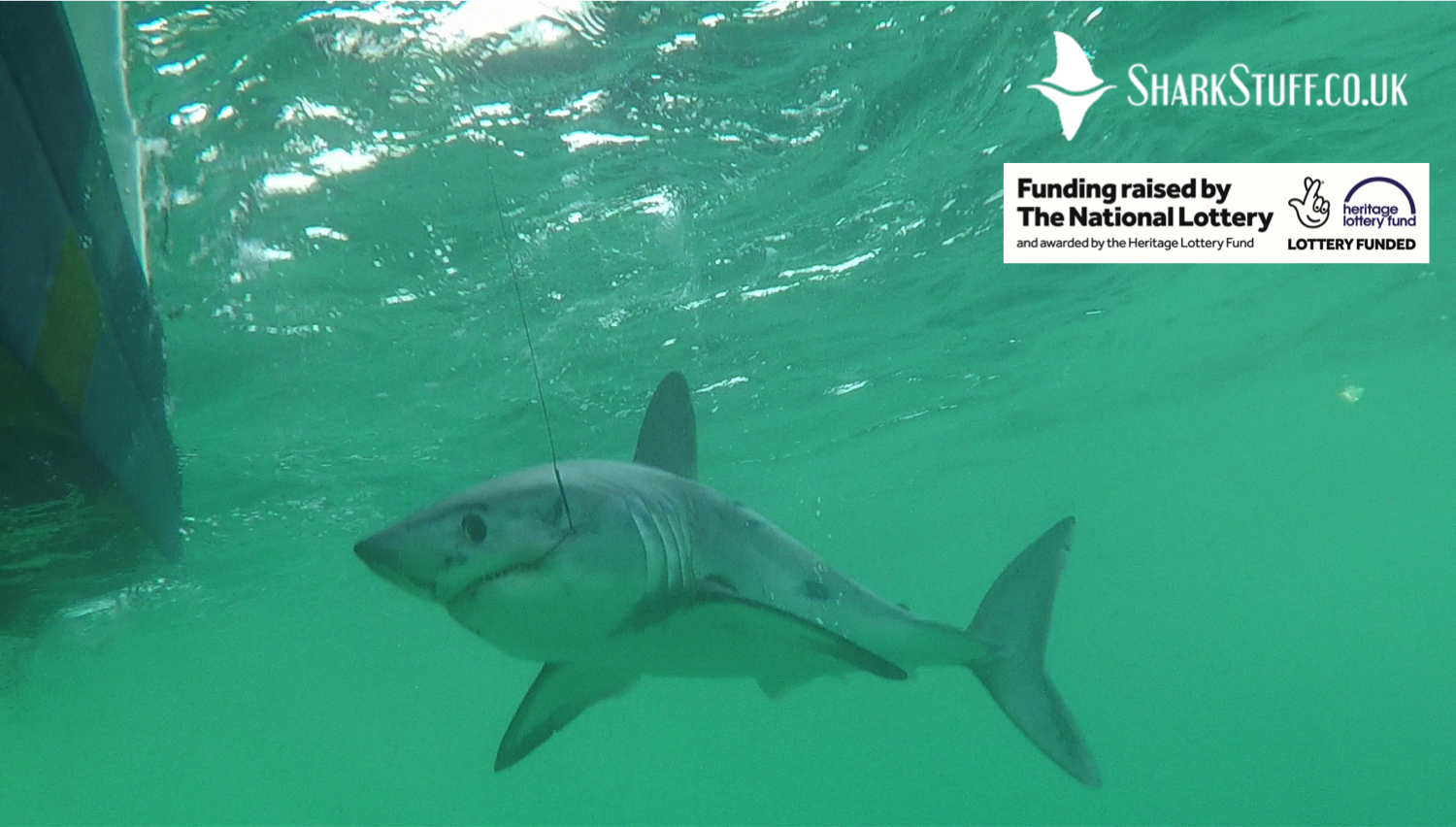What is a Porbeagle?
16th December 2018 | by Georgia FrenchWe talk about porbeagles quite a bit...but what are they?

What is a porbeagle?
Porbeagle sharks (Lamna nasus) are a species of mackerel shark that can range from 2-4m in length. This species often frequents depths ranging from the shallow shore, to over 1000 metres, in the cold and temperate waters of the North Atlantic (there’s a separate population in the Southern Hemisphere). In the North Atlantic they can be found from Eastern Canada to southern Greenland, and east to Bermuda, and Morocco.
Sometimes known as the ‘Porgie’ the Porbeagle shark belongs to the order Lamniformes, which is Greek for “fish of prey”. Several Lamniformes inhabit the Atlantic Ocean such as the great white, and here in Dorset along the Jurassic coast, porbeagles and mako sharks. Porbeagles are actually often mistaken for these close relatives. Each of these species has two dorsal fins, an anal fin, 5 gill slits, eyes without nictitating membranes and a mouth that extends beyond the eyes (#bigsmiles!).
Despite the common misidentification, there are some key identifying features of the Porbeagle. The most characteristic is a light grey or white rear margin of the first dorsal fin, which is very clear contrasting the darker coloration of the dorsal side.
What do we know?
The evolution of porbeagles led to a number of physical adaptations, such as a crescent shaped tail fin, pointed snout, heavy build, and a network of blood vessels that make them warm-bodied. These adaptations mean that they are fast swimmers that stay fast in cold water. This ultimately helps them to catch their prey which includes bony fish such as mackerel, hake and haddock, but also squid and cuttlefish (because who doesn’t enjoy a bit of calamari).
Often described as the ‘dogs’ of the sea, and seen in small groups, these sharks have been seen by lucky people off the Cornish Coast rolling and wrapping themselves in kelp at the surface, and pinching fish from fishermen (everyone wants a free meal, right?) (SHARKS: Helfman and Burgess, 2014).
When they aren’t ‘playing’ or eating, and the waters are a little warmer, it is thought that mature sharks may mate or go to give birth. When they mate the embryos develop without a placental connection, in the form of development known as ovoviviparity. Here, the foetuses feed on unfertile eggs within the uterus of the mum, where they stay for 8-9 months before being born. There are usually 1-5 pups born in the spring or summer in the Northern Hemisphere.
What we know in the UK so far
Unfortunately due to targeted fisheries for this shark in Canada and areas of Europe and from accidental bycatch from fisheries, numbers have dropped dramatically in the Northern Hemisphere rendering this species Critically Endangered.
Despite this we are lucky to document and report a few sightings off the coast here in the U.K. every year. Documented sightings and captures of the Porbeagle in recent years include Chesil Beach, Dorset in 2015 and Whitby in North Yorkshire earlier this year in 2018. One of the largest specimens ever recorded was captured and released only last month (June 2018) off the Pembrokeshire Coastline!
After the new sharks are born we don’t know very much about them, but what we do know, is that many young sharks/juveniles, especially males, have been observed in the Bristol Channel, and many females have been observed along the Scottish coastline (Camhi et al., 2008: pg105-113), suggesting that British waters are important areas crucial for the development.
Studies focusing on the movement behaviour of porbeagles have shown varying movement patterns, which included movements to deeper waters around the Celtic sea, but also movements north to colder latitudes, and south after summer to the Bay of Biscay. What this tells us is that different sharks may have individual behaviours and therefore move differently, but it may also suggest that different life stages migrate to varying regions, further highlighting the lack of information on this species, and the need for more research to find out just what our porgies are doing.
What we (SharkStuff) are doing and how will it help
This species not only interests the likes of scientists and conservationists around the globe, but it is also highly valued as a game fish by sports fishers in the U.K., Ireland and the U.S. Porbeagles are notoriously shy of divers and very hard to collect data on without capturing them. It’s important for scientists and fishers to work together to collect information that can help to us to manage and conserve the species. Our project will provide data on the size, sex and distribution of the porbeagle off the coast of Dorset, an emerging UK hotspot for the species.
Back to all News